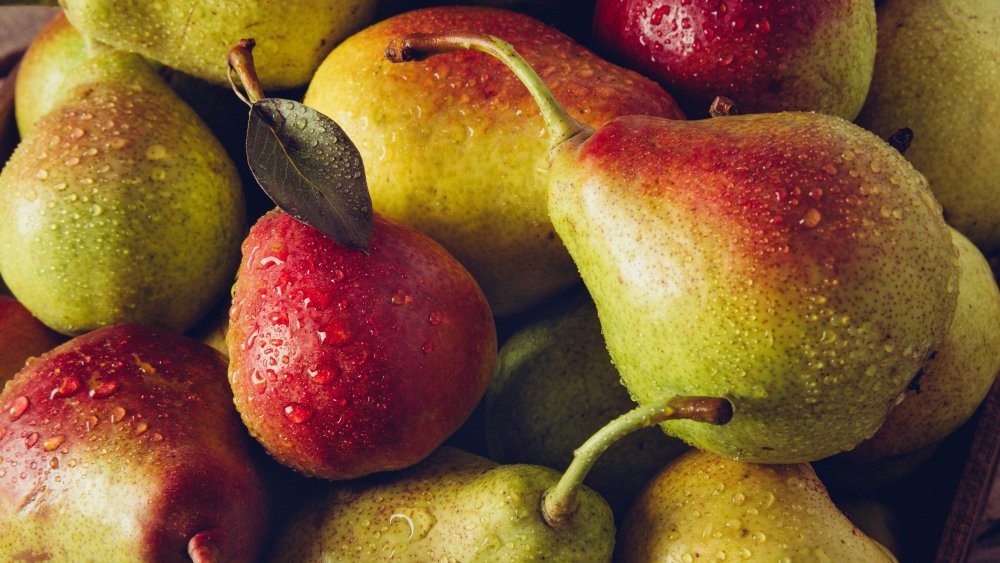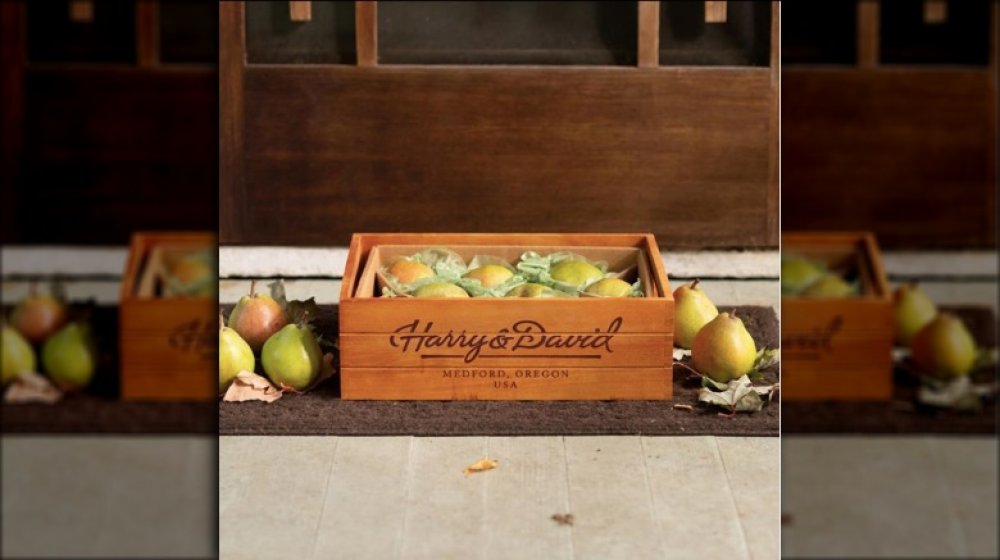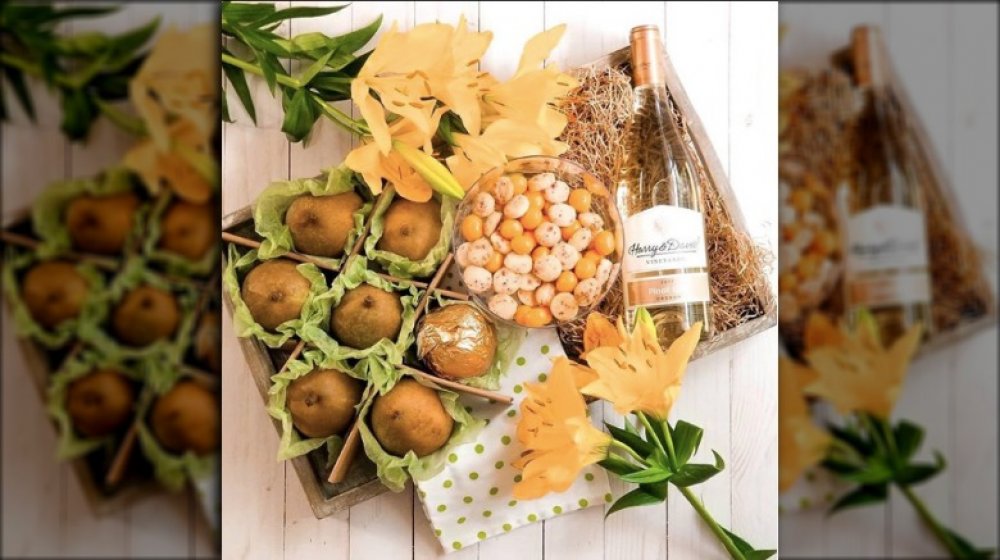The Untold Truth Of Harry & David Pears
Whether you've received a box of gold-wrapped fruit or not, you've probably wondered what the truth behind Harry & David is, or at least why their luxurious boxes of fruit are so expensive. As it turns out, both Harry and David were very real, and they faced a tough road to bring their business to the standing that it enjoys today. The duo were actually brothers whose father, Samuel Rosenberg, was a hotelier in Washington state with a propensity for farming. In 1910, he sold the hotel and bought 240 acres of land on Bear Creek in Oregon's Rogue River Valley (via Mental Floss).
When Sam died in 1914, Harry and David took over what they named Bear Creek Orchard after graduating from Cornell University's agriculture school. The brothers called their pears "Royal Riviera" and marketed them as a luxury item in Europe and on the East Coast in the 1920s. Though they struggled at first, eventually they dropped off unsold boxes of pears along with a handwritten note to business tycoons in both New York City. The businessmen then wanted to do the same: send boxes of fruit to their clients. Thus, mail-order fruit packaged from Harry & David was established.
Though they faced challenges through the 1930s Great Depression and with World War II, the business continued to succeed. However, they did have to change their last name to Holmes to avoid anti-Semitic boycotts, which helped keep the company in the family until 1976.
What kind of pears do Harry & David use anyway?
Though the pair finally found a market for their fruit boxes, it still required an elevated fruit to draw the customers in, and these were no ordinary pears. Harry and David's Royal Riviera pears are "among the sweetest" of any pears (via Harry & David). But, they're actually a kind of Comice pear that is native to France. They were first identified there in 1856 and were introduced to Oregon's Rogue River Valley in 1897, according to Harry and David. Southern Oregon's climate and soil are just right for growing this delicious fruit.
These pears are known for their plump, silky texture, and of course the sweet flavor. They were even a favorite of royalty and a rare fruit at the time. The pears were later served as "The Fruit of Kings" in the best restaurants in Europe prior to making their way to the Americas. Fortunately, this tricky pear to grow flourished in Oregon's fertile countryside. Eventually, they garnered the tagline, "so big and juicy, you eat them with a spoon."
Here's how they dominated the market
While these pears are some of the best tasting and range from snack size to one pound each, there's more to them that justifies the hefty price. "It's a bit of the product, yes, but it's also a lot of the nostalgia," said Lauri Harrison, an adjunct professor of marketing at Columbia University (via Eater). In Harrison's opinion, the higher prices that the company can list are all about the brand's legacy. She believes Harry & David is successful due to the emotional connection people have.
It revolves around nostalgia. "When I was a kid, if you got the pear that was wrapped in gold foil, then that was your special treat for the day," Harrison says. "From the box, to the gold wrap, to the customer service, they're all about the experience, and I think that has carried through generation after generation." It doesn't hurt that the nostalgia is easily paired with the holidays. The pears are in season during the holidays and they're right in the songs: a partridge in a pear tree.
So, whatever your attachment may be, chances are it's strong. Although the company filed for bankruptcy in 2011, they bounced back from it. The aura around Harry & David products continues to be one of luxury, and that helps warrant the high prices. Know that the next time you order from them you're buying the brand as much as you are carefully-tended to pears.


